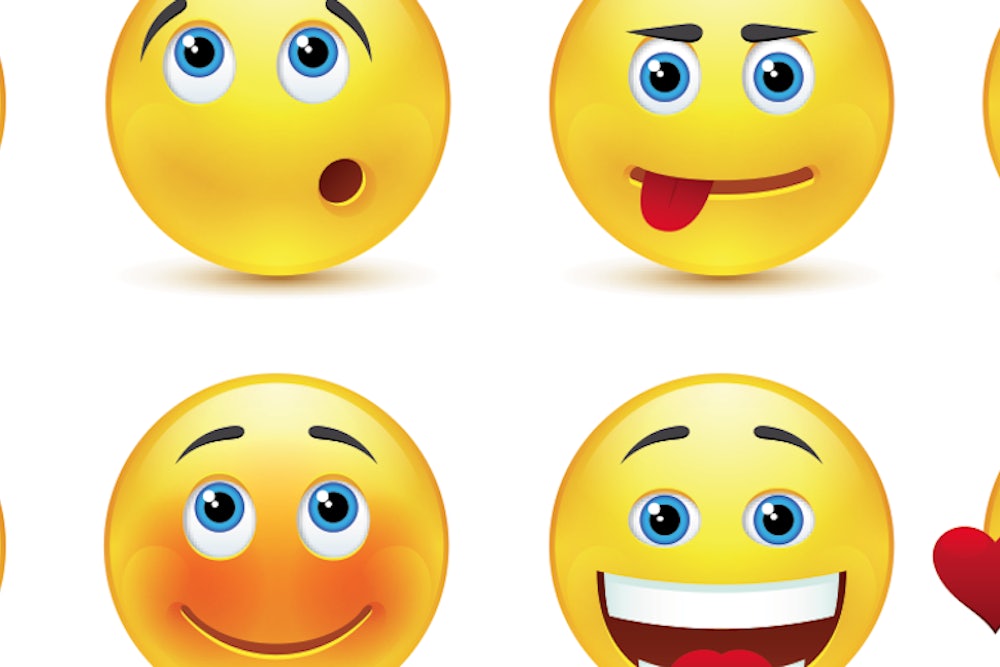It originated in Japan, but Americans have, in recent years, picked up on the emoji trend: $340 emoji embroidered slippers, anyone? With new emoji characters for the iPhone set to be released in July, everything from humorous wish lists to charges of racial insensitivity has surfaced on the internet. But few realize just how un-glamorous the group behind the emoji is.
Unicode is not a hot startup or a faddish app. (That much is clear from a quick glance at its website.) It’s not out for profit. Unicode is not even responsible for the design of the emojis themselves. But they do, crucially, encode the symbols so that they can appear as pictures and not empty boxes, regardless of a phone or computer’s manufacturer. In other words, Unicode makes sure that the code for U+1F36D LOLLIPOP is distinct from the code for U+1F370 SHORTCAKE on all platforms. What the exact shape of U+1F36D LOLLIPOP looks like is up to each vendor.
Here, for example, are a few of the many possible representations of four different emoji (iPhone emoji users will recognize the images in the third column):
Emojis may be a fairly new phenomenon, but Unicode has been working on standardizing the encoding of hundreds of languages for more than twenty years. The group began its work “to replace what was a bewildering and inconsistent set of encodings that were used for different languages,” says Mark Davis, president and co-founder of the consortium, who lives in Zurich and works for Google. To this day, their focus has remained on developing and promoting the Unicode Standard, a single encoding system that covers hundreds of languages. Their work is ubiquitous to the point of being invisible—virtually every character we type on our computers and phones, in most any alphabet, has passed through Unicode encoding for international standardization. Unicode counts among its membership Apple, Google, Microsoft, IBM, and more.
According to Unicode’s website, before their standard system was developed, hundreds of different systems were used to assign code combinations to letters, numbers, and symbols in different alphabets, often with some overlap. By contrast, Unicode assigns a unique number to every character, so that it is guaranteed to be legible across platforms, programs, and languages.
When Japanese cell phone carriers started making emoji available, different vendors used different codes for the same symbols (or the same code for different symbols). Unicode treated the symbols as, essentially, another language, and offered their services to the Japanese companies. (It’s important, after all, that your friends receive the emoji that you think you’re sending them: witness this heart-related mishap.)
Though it doesn’t dictate how the emoji look—merely ensuring that they look like pictures at all—Unicode recognizes that the how matters, too. “We are looking at the diversity issue because we know it is important to people,” Davis told me. A working draft of their latest Technical Report is publicly available online, and they plan to discuss issues of racial representation at their August quarterly meeting.
Apple has also said that they are addressing the “diversity issue,” though they have tried to deflect attention from the racially homogenous emoji available on iPhones, telling MTV by way of explanation that their characters “are based on the Unicode standard.” In fact, while the Apple characters depend on the Unicode standard for display, Unicode does not determine the racial or ethnic appearance of emoji.
We may not like every emoji, but it’s hard to dislike Unicode. Even smiley inventor and notorious emoji-basher Scott Fahlman thinks it’s as good a group to standardize emoji as any. “They’re independent and trusted," Fahlman said. “Unicode is neutral and they've been standardizing text for a long time.”
Image via shutterstock.

